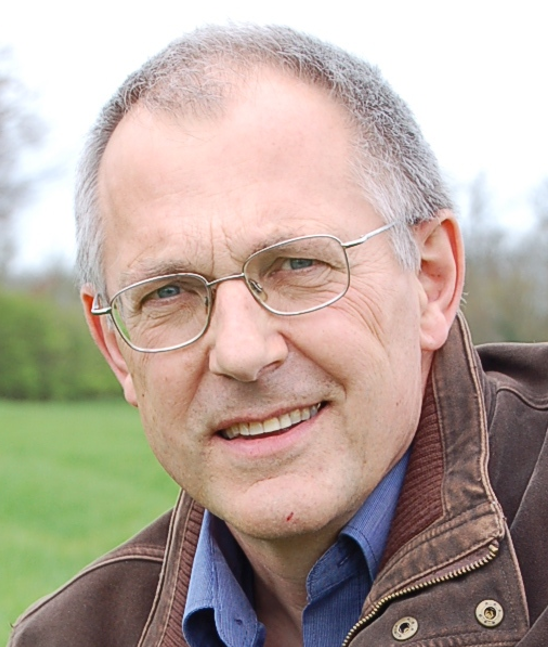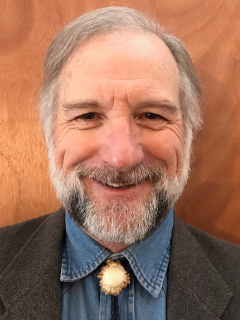
Date: Mon Jun 25, 2018
Time: 3:30 PM - 5:00 PM
Moderator: Simon Cook
Nitrogen fertilizer decisions are considered important for the agronomic, economic and environmental performance of cereal crop production. Despite good recommendation systems large unpredicted variation exists in measured N requirements. There may be fields and farms that are consistently receiving too much or too little N fertilizer, therefore losing substantial profit from wasted fertilizer or lost yield. Precision farming technologies can enable farmers (& researchers) to test appropriate N rates, through tramline comparisons and analysis of yield maps. We report findings from the LearN initiative in the UK to help enable farmers to test N rates on their farm, to learn whether the N rates they are using are about right, too high or too low. A group of 18 farmers were supported to conduct simple tramline trials with single replicates of 60kgN/ha more and less fertilizer in alternate tramlines, on 3 fields per year from 2014-2017.
We found strong engagement from farmers in conducting tramline trials, which are in principle easy to set-up, manage & harvest. However, there are many challenges that are not always fully appreciated; ensuring comparable treatment areas; precise recording of tramline wheelings and treatment boundaries; non-linear application by spinning disc spreaders; protocols for combine harvest; transfer, processing & cleaning of data; data analysis & statistics to achieve robust conclusions in the face of confounding variation and appropriate interpretation.
Overall yields were 11.43, 11.07 and 11.74 t/ha for farm-standard, +60kgN/ha and -60kgN/ha respectively, giving differences in margin of -£8.75/ha and +£0.51/ha. Differences in yield between two ‘farm standard’ tramlines was used to give a crude measure of error and infer confidence. Firm conclusions on N management could be made on around half of the 142 tramline experiments. Underlying spatial variation in yield was usually much greater than the nitrogen effect. A few fields and farms were found with sub-optimal N rates, but lost profits were modest. We conclude that nitrogen is not the major cause of variation in yield within & between fields and farms. Tramline trials are useful for understanding variation in yields; for maximum impact they should be networked and employ spatial analysis.

In both the academic and popular literatures on precision agriculture technology, a management zoneis generally defined as an area in a field within which the optimal input application strategy is spatially uniform. The characteristics commonly chosen to delineate management zones, both in the literature and in commercial practice, are yield and variables associated with yield. But microeconomic theory makes clear that economically optimal input application strategies do not necessarily depend on yield levels; rather, they depend on the responses of yields to inputs. Therefore using “yield zones” to determine “management zones” is likely to be a suboptimal strategy, and these zones should instead be delineated using characteristics that affect the yields’ response to inputs. Specifically, a management zone should be an area of the field with the same marginal product function with respect to the input being managed.
This paper reports research that uses data from a 2017 full-field randomized agronomic trial to assess the impact on economic profits of these the yield-based and economic-theory-based approaches to nitrogen management zone delineation. The response of yield to many different factors, including managed inputs and soil and field characteristics (e.g., electroconductivity and slope), is known as a yield function, and the marginal product of nitrogen is the derivative of this function with respect to nitrogen. Estimation of the yield function for this field used a quadratic form, and considered both a full set of covariates containing results of a soil test and a subset of the covariates with only electroconductivity and topography variables. Results indicate a spatial error model is appropriate as shown by a significant nonzero Moran’s I on the error terms from the OLS estimation. Additionally, results indicate there is information contained in the soil tests that impacts yield estimation but the value is not estimated in this preliminary work.
The results of this research inform both future literature and commercial activity in precision agriculture. With the establishment of theoretically consistent new methods for delineating management zones, management advice may improve, and the value of data collection such as soil sampling and electroconductivity measurement can be increased.
Crop production input decisions have become increasingly difficult due to uncertainty in global markets, input costs, commodity prices, and price premiums. We hypothesize that if producers had better knowledge of market prices, spatial variability in crop response, and weather conditions that drive crop response to inputs, they could more cost-effectively make profit-maximizing input decisions. Understanding the drivers of variability in crop response and designing accompanying management strategies would hence allow increased resilience to economic or climatic perturbations or system stress. We have developed an on-farm precision experiment (OFPE) framework drawing on site-specific agriculture technologies to provide the best estimate of field-specific, site-specific profit-maximizing input application. Our test of the on-farm precision experiment framework was to site-specifically optimize nitrogen fertilizer application rates on 10 dryland winter wheat fields on wheat farms in Montana. After two years of implementing the on-farm precision experiment framework, we demonstrated that nitrogen rate experiments could be applied using a previous year’s yield stratification with standard variable rate fertilizer applicators. In addition, using these empirical results we demonstrate that producers could increase net returns.



Due to the overlap of many disciplines and the availability of novel technologies, modern agriculture has become a wide, interdisciplinary endeavor, especially in Precision Agriculture. The adoption of a standard format for reporting field experiments can help researchers to focus on the data rather than on re-formatting and understanding the structure of the data. This paper describes how a European consortium plans to: i) create a “handbook” of protocols for reporting definitions, methodologies and parameters measured/calculated; and ii) how a data-template for field data was created and will be linked to the “handbook”. The overall goal of the EU-funded project Solutions for Solutions for improving Agroecosystem and Crop Efficiency for water and nutrient use (SolACE) is to help European agriculture face major challenges, such as increased rainfall variability and reduced use of N and P fertilizers in order to satisfy both economic and ecological goals. The “Handbook of Protocols” and the “Data Template” have been created to achieve a flexible, standard, and clear documentation linked with the data itself to facilitate interchange of data among project’s partners and any statistical analysis and modelling of different datasets.
Uniform seed placement improves seed-to-soil contact and requires proper selection of downforce control across varying field conditions. At faster ground speeds, downforce changes and it becomes critical to select the level of planter downforce settings to achieve the desired consistency of seed placement during planting. The objective of this study was to assess the effect of ground speed and downforce setting on seeding depth and plant spacing and to evaluate the relationship of ground speed and row unit ride quality on gauge wheel load and its impact on seed placement consistency. A 12-row Horsch planter equipped with a hydraulic downforce control was used for planting non-irrigated corn. Three levels of fixed downforce (FDF) and two levels of active downforce (ADF) settings along with four levels of planting speed (7.2, 9.7, 12.1 and 16.1 kph) were utilized in the experiment. The planter was programmed to plant corn at 5.08 cm (2 in)and 6.35 cm (2.5 in.) target seeding depths with seeding rate varying from 65,500 to 72,400 seeds/hectare (30,000 to 32,000 seeds/acre). Results suggests that planting speed and downforce setting influenced consistency in seed placement. Slower ground speed, medium setting for fixed downforce control and high setting for the active downforce control resulted in a more uniform seed placement as measured by significantly lower frequency of misses and doubles. Seeding depth was maintained within the range of the target by the medium and high setting for the fixed downforce control. Increasing the seeding depth by half inch resulted in an average of 77% reduction the gauge wheel load which caused the seeding depth to be outside the target range all the time. Both settings for the active downforce control exhibited an average seeding depth of within the range except at higher ground speed for the low setting. Row unit bounce increases with speed for both fixed and active downforce control.



The historic Knorr-Holden experimental site near Scottsbluff, Nebraska, US, established in 1912 is the oldest irrigated maize plot in North America. Over years, the treatment has been revised a few times to reflect and address contemporary practices. The N fertilization is found to be capable of restoring most of production capacity of the soil. After a full century of the experiment, in 2014, N treatments were revised again. Now, the experiment is a split-plot randomized complete block design with four replications. The main factor is manure treatment (0 and 67 Mg ha-1) and the sub-plot is N treatment, which includes 0, 56, 112, and 168 kg urea-N ha-1. There are additional N treatments of 224 and 280 kg urea-N ha-1 in non-manured plots and urea-N treatments based on spring soil test (SST) and crop sensing at V6 (CS) in manured plots. Manured plots received 67 Mg ha-1 of cattle manure in 2014 and will continue at same rate every four year. Collection of crop vegetative indices for all N treatment plots at several growth stages was initiated using a passive sensor, Crop Circle® in 2017. The normalized difference red edge index (NDRE) at different maize growth stages (V6, V8, V10, and R1) were correlated with urea-N rates and maize grain yield. Grain yield in manured plots were greater than in non-manured plots. Grain yield in the control treatment was the lowest of all in 2017. When N treatments in manured and non-manured plots were analyzed separately, no significant effect of N treatment was observed in manured plots. Among N treatments in non-manured plots, the control treatment had the lowest grain yield among all. The 56 kg N ha-1 treatment had significantly lower grain yield compared to the 280 kg N ha-1. The NDRE at all growth stages were significantly correlated to urea-N treatments in non-manured plots only. The regression relationship between NDRE and corresponding grain yields was the best at growth stage V10. The NDRE had poor correlation with urea-N treatments in manured plots, highlighting the importance of accounting for N supply from other N input such as manure while using crop sensor data and need for calibration of sensor for manured fields.
